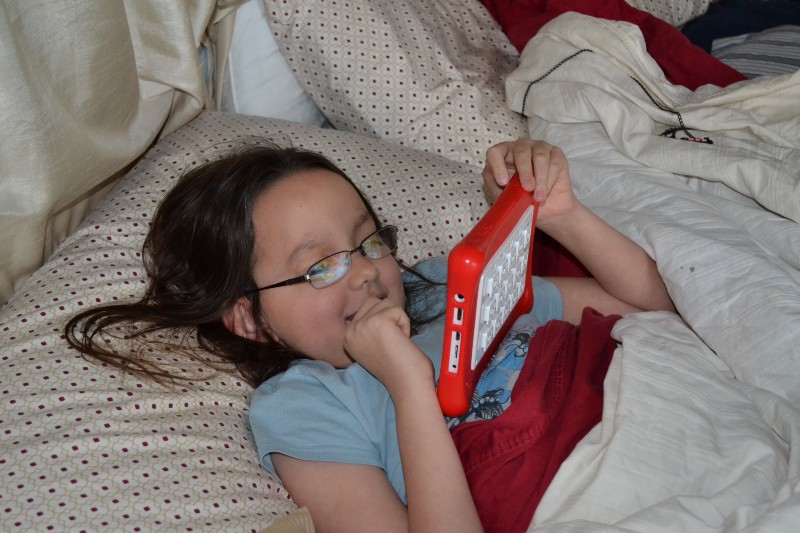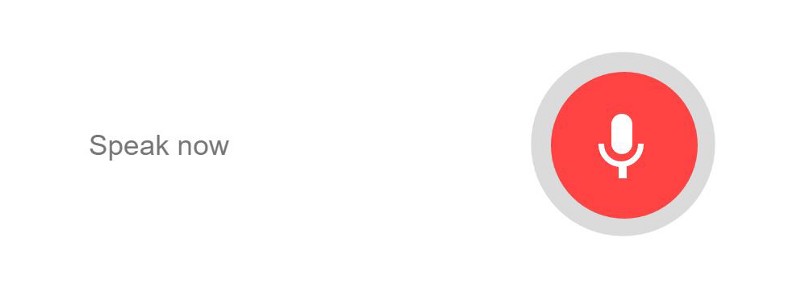by Drew
How my daughter taught me about accessibility

Spending the last few months learning about programming has been an eye opening experience. I have become painfully aware of how much there is to learn when faced with the seemingly endless number of technologies and concepts that go into even the simplest of things.
As I finally start to grasp the basic but necessary “how” portion of my learning I have begun to ponder the “who and “why” as well. I have learned that who will use the program or website I am building and why they would even need it are necessary to consider when attempting to make something useful.
A recent revelation has really put things into focus for me, and undoubtedly will shape some of my emphases as I continue down this programming path.
First some back story. I am the father of two fantastic young girls one of which was born with a condition called Periventricular leukomalacia. Her condition has several challenges associated with it namely cognitive delay, poor eyesight, some fine motor issues, speech impairments as well as seizures. While her symptoms are considered mild for this diagnosis, her main struggles are around her mental function.
She thinks and acts like a child who is many years younger. At eight years old she still struggles with letter and number identification among other things. For all her challenges she has a strong independent streak and an enviable drive. She doesn’t want to hear that she can’t do things her older sister is doing. She’ll try regardless of what we think she is capable of and often times impress us all with what she able to figure out on her own just by working at it continually.
My wife and I were in our basement recently working on our computers when we started hearing her little voice through the monitor. “Rock Band” she said. There was a pause. “Rock Band” we heard again. I went upstairs to see what she was up to and I found her tucked under the covers of my bed playing with her Nabi (tablet).

I asked her what she was up to and in her signature way replied “just nothing.” I walked over to see for myself and I noticed that she was on Youtube watching videos of the game Rock Band (something we love to play together). Needless to say, I was impressed. She isn’t able to read or write, but she was able to find the microphone icon in the search bar and use it to bring up whatever she wanted.
Other than share what I saw with my wife, I didn’t spend much time thinking about it the rest of the night.
A few days later, I was once again on my computer, but this time she was sitting right next to me, using my wife’s computer to play some Minecraft. I got a chance to watch her more closely this time, and was no less impressed than before.
She clicked on the Google Chrome icon and was taken to the default home page where she proceeded to once again click the microphone icon and search for “toys.” It was right then that the concept of accessibility hit me like a truck.

In this wonderful moment of discovery, I had learned the power that comes from breaking down a barrier, and opening a world to someone that was previously reserved only for those fortunate enough to have certain particular abilities.
When accessibility has been brought up in conversations that I have heard, it typically centers around visual impairments. What was so instructive for me was seeing it play out in a totally different context. I thought to myself, “if this is something that can help people overcome their limitations, what else is out there?”
One really great resource I have found recently is the A11y project. The project bills itself as “A community-driven effort to make web accessibility easier”. It’s goal is to educate developers on many of the “best practices” of accessible web design. It not only tackles the practical how to’s but also explains how widespread the need really is.
The four main areas of accessibility listed are visual, auditory, motor, and cognitive. Interestingly, I found my own daughter falling into three of those four main groups. When you really start to look into the range of people affected in some way by limiting factors, you realize just how impactful accessible software can be, whether on a website or a native application.

Many people we would never have considered “users” of software are interacting and even relying on its very existence everyday. If we ignore these needs, we are cutting off a staggering number of people who would want — or possibly even need — to interact with the websites and programs we create.
As I progress through my studies, I now have more than a passing interest in the concept of accessibility. I am fortunate in that I can merely glance over at my amazing little girl and see first hand the power and freedom that accessible software can provide.

I can think of no better motivator to focus on accessibility than the promise of making a real difference in the lives of people who need it the most.
Originally published at thecodinghyrax.wordpress.com on April 7, 2016.
